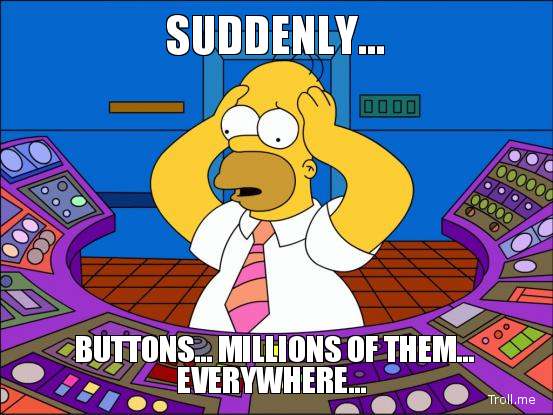Оказывается, не все четко различают разницу между словами percent и percentage и часто используют их как синонимы, но это далеко не так.
Проверьте себя и посмотрите, в чем же разница.
Скорее всего проблема тут кроется в том, что на русский оба слова часто переводятся “процент”, что приводит к путанице.
Percent или Per Cent
Оба варианта написания кстати допустимы, и любители считать слова в Writing Task 1 знают, что “percent” считается за одно слово, а вот “per cent” – за два:) И они правы. Per cent, однако, считается устаревшим вариантом и используется значительно реже.
Percent используется только с числами, когда вы хотите указать количество процентов. Например, 5 percent.
Все просто!
Это слово используем только в значении “показатель”, “количество”, “процентаж”. Слово percentage по сути равнозначно словам rate, indicator, index или figure. Например, the percentage of travellers from Sweden had a steep rise – процентный показатель туристов из Швеции резко вырос.
Слово percentage никогда нельзя использовать с числами.
Неверно: the rate decreased to 15 percentage
Верно: the rate decreased to 15 percent
Можно ли использовать Percent во множественном числе?
Нет. Будь то 1% или 100%, слово percent должно оставаться в единственном числе.
Слово percent имеет латинские корни, как и многие другие английские слова, и означает “на каждую сотню”. “Сотня” – единственное число, и не надо превращать его в “сотни” – это противоречит логике.
Можно ли использовать Percentage во множественном числе?
Да. Если вы говорите, например, о процентажах нескольких стран, то множественное число для percentage вполне допустимо (percentages).
Пример: Sweden and South Korea reported equal percentages of students studying abroad – Швеция и Южная Корея сообщили об одинаковых показателях (процентажах) студентов, учащихся за границей.
Поделитесь с друзьями или своими ученикам/студентами, если они путают эти слова
У нас есть онлайн-курс IELTS Writing Task 1 (Academic)
Полное решение для удаленной подготовки к написанию репортов IELTS Writing Task 1 (Academic), включая:все виды заданий 40 примеров (model answers) алгоритм написания каждого абзаца необходимый вокабуляр и грамматические конструкции возможность сдать на проверку до 10 практических заданий Записаться сейчас!
Сложности с процентами
Возможно, для большинства тут все очевидно, но при переводе с русского на английский есть пара-тройка интересных нюансов, связанных с тем, как изобразить проценты.
- percent или per cent
Наверняка вы замечали, что в текстах на английском языке чаще пишут не знак процента (%), а percent или per cent. Но что выбрать?
Слитное написание является стандартом в американском английском:
Over 70 percent reported that their firm had a strategic relationship in India…
В британском английском предпочитают вариант раздельный, хотя слитное написание тоже допускается:
The UK economy shrank by a record 20 per cent in the first full month of lockdown as shops sent workers home to close for the duration of April.
- percent/per cent или %
В книгах, газетах, журналах, официальных документах для записи процентов в основном принято использовать слова, а не знак %.
The economics essay shows that the unemployment rate has dropped to 10 percent.
Понятное исключение — книги по математике, технике, информатике…
We assume that the number 89 is 100%…
Также знак процента используют, когда важно экономить место, например, в таблицах, в рекламе. Газеты и журналы тоже иногда его используют ради экономии.
N.B. Знак % после количества процентов, записанных словом, не используют: six % — неверно, нужно писать six percent.
- цифры или слова
Общее правило: количество процентов меньше 10 записываются словами, 10 и больше — цифрами.
The Other One Percent: Indians in America
But what’s going to happen to our costs on the other 98 percent of the work centers we got here?
Исключения:
1) В таблицах и графиках, в математических, технических и тому подобных документах любое количество процентов обычно пишут цифрами со знаком %:
- 6% + 5% =11%;
- 17% of our contributors are employed by a large organization of more than 1,000 employees.
2) Если заголовок или заглавие начинается с процентов, то, как правило, их записывают словами, независимо от количества:
Fourteen percent of Mexican American families are female headed.
#alproTS, #english, #l10n, #russian, #t9n, #translation, #xl8
Материалы обработал:
Евгений Бартов
15.06.2020
Больше контента от наших переводчиков, редакторов по ИТ/медицине смотрите на канале https://t.me/alliancepro
Say you own 34 shirts, but 33 of them are too small. You want to find out what portion of your shirts are too small, so you divide 33 by 34 to get 0.97. You subsequently move the decimal two places to the right to arrive at 97 and attach the % symbol.
You have now calculated that precisely 97% of your shirts are too small. It’s time to go shopping, or to eat fewer cheeseburgers.
When writing about numbers, stylistics sometimes dictates that mathematical symbols be written out in word form. This can be cumbersome, and in some instances actually makes text more difficult to read.
Nonetheless, there are situations in which you may be required to avoid symbols like the % sign and instead express that concept in the form of words.
Should you use two words, as in per cent, or shorten two words to one, to form percent?
Continue reading to find out.
What is the Difference Between Per cent and Percent?
In this article, I will compare per cent vs. percent. I will use each in a sentence, so you can see how they are properly uses, and, at the end, I will discuss a useful trick to decide whether you should use percent or per cent in your writing.
When to Use Percent

In American English, the single word variant is standard.
You could use it like this,
- Ninety-seven percent of my shirts are too small.
- According to recent data, Coca-Cola owns greater than 17 percent of the soft drink market, followed by Diet Coke at nearly ten percent, and trailed by Pepsi, at just under nine percent.
- Nearly 94 percent of districts and around 84 percent of public schools in Texas met minimum education standards, officials announced Monday, in the final incarnation of an academic rating system that next year will be replaced with letter grades between A and F. –ABC News
When to Use Per Cent

- At its peak, Mir mine produced on average two million carats of rough diamonds a year, worth at least £20million, and with nearby mines was responsible for 23 per cent of the world’s rough diamonds. –Daily Mail
It should be noted, however, that the word cent, in many nations, denotes a denomination of currency. If you were referring to individual cents and the quantity of goods to be exchanged for each one, you would use per cent.
For example,
- If Wendy buys one ton of wheat, she could buy it at a price of 3 ounces per cent.
In other words, Wendy gets 3 ounces of wheat for every cent.
This scenario is an extreme outlier, but it illustrates one of the difficulties of writing mathematical symbols in word form, which is a standard convention in most formal writing.
It is much more common to write out percent than to include a percent sign, % , be it in books, newspapers, or magazines.
Technical books or mathematical books are an obvious exception.
Why the Difference in Spelling?

While it’s not commonly known among younger writes, the spellings percent and per cent are both abbreviations for the Early English spelling per centum.
So, British writers aren’t separating the word; American writers are conjoining it.
The evolution of the word through English has taken these forms Per Centum > Per Cent. > Per Cent > Percent.
Trick to Remember the Difference
Here is a trick to remember per cent vs. percent for your writing.
If you are in a situation where you need to write out the words percent or per cent, use percent with American audiences and per cent with British audiences.
You can remember to use per cent with British audiences since British currency uses pence instead of cents, so Britons avoid the possible confusion when buying commodity goods.
Summary
Is it percent or per cent? Per cent and percent are two ways of describing the symbol %, which refers to one part in a hundred.
- Per cent is the preferred British spelling.
- Percent is the spelling preferred in American English.
You can remember to use per cent for British audiences since they denominate their currency into pence, rather than cents, so they are less likely to be confused.
Contents
- 1 What is the Difference Between Per cent and Percent?
- 2 When to Use Percent
- 3 When to Use Per Cent
- 4 Why the Difference in Spelling?
- 5 Trick to Remember the Difference
- 6 Summary
How should I choose between writing «percent» and «per cent»?
For example:
He sold 42 percent of his stock in the company.
or
He sold 42 per cent of his stock in the company.
Are there different styles which I can choose from as long as I’m consistent, or is one of these correct/incorrect in some specific situations?
herisson
76.7k9 gold badges196 silver badges338 bronze badges
asked Feb 26, 2013 at 6:54
Fabian FagerholmFabian Fagerholm
7984 gold badges11 silver badges23 bronze badges
Both percent and per cent are acceptable. The ODO’s AmE entry carries the following note:
Origin:
mid 16th century: from per + cent, perhaps an abbreviation of pseudo-Latin per centumBoth spellings, percent and per cent, are acceptable, but consistency should be maintained. Percent is more common in US usage; per cent is more common in British usage.
The AmE vs. BrE difference can be confirmed (to an extent) by these two ngrams. Also, as you’ve stated, it’s important to be consistent with whichever choice you make.
answered Feb 26, 2013 at 7:04
coleopteristcoleopterist
30.7k28 gold badges114 silver badges199 bronze badges
2
Just to add an Australian perspective to this one…
The Commonwealth Government Style Guide (Sixth Ed.) says:
The spaced form, per cent, is recommended: it is the one most commonly used in Australia; it is given priority by both the Macquarie and Australian Oxford dictionaries.
It does go on to add ( in support of the earlier answer):
However, percent is the dominant form in the United States and is being increasingly used in the United Kingdom
answered Oct 17, 2013 at 23:44
There is potential for confusion through using «per cent» where % is intended, as, if a cent were worth more, in a formulation (which would admittedly, in this example, at least, probably have the actual meaning readily clarified by context) such as «I got forty per cent.», where the argument could be made «I got forty/¢ (i.e., 40 [somethings] per penny/cent)», as opposed to «I got 40%». The two meanings are clearly as different as between 40th (fortieth) and 1/40 (fortieth), but in no circumstance can «percent» be confused for /¢ instead of %, whereas «per cent» could. Theoretically.
answered Apr 26, 2013 at 7:35
TomerTomer
1871 silver badge4 bronze badges
1
Nowadays ‘percent’ is more preferable than ‘per cent’, considering the many different currencies with their units of measurements. E.g ‘per cent’ may be perceived as an actual unit against a cent.
JMP
3,59426 gold badges32 silver badges39 bronze badges
answered Jan 8, 2018 at 4:15
While I was double checking a student’s use of the word per cent, I stumbled onto this thread and Website. I am American and spell the word percent.
I teach TOEFL and IELTS to German university students who would like to study abroad, primarily in the U.S. or England. But in order to save money, some students have opted to attend English-only universities in continental Europe that have sprung up within past decade to promote 3- or 4-year bachelor and 1- or 2-year master degree programs found in native English-speaking countries, notably the United States.
It is really fun. But despite my professional affiliation with British colleagues, a word sometimes crops up that really piques our fancy, like per cent. Or percent. As any essayist — and particularly an academic essayist — should tell you, please stick to the same national governance of spelling and usage (BrE or AmE) and do not mix them. For example, when writing about the colours of artistic impressionism, don’t dwell on the shaded colors. A good note on your British exam could mean a bad grade on your American exam. If you want a good score on the written part of your iBT (internet-Based TOEFL) test, stick to one or the other; never use two different English styles in a written essay — unless, naturally, the essay itself is about different English language styles.
Hence I teach TOEFL students to stick to one or the other, BrE or AmE. I advise using the langauge governance that a student is most familiar with. The iBT adjudicators only care that a person sticks with one, BrE or AmE. But it seems the IELTS does not allow you this option. Therefore I would like some input from others on this.
As I stated in my first sentence, a TOEFL student wrote an essay using the word per cent, and it dealt with economic figures. That student certainly could have used the percentage symbol ( % ), but did not. Ironically this student is applying to an British university that
does not accept TOEFL, but rather the school insists on an IELTS score. Now TOEFL is primarily an AmE test and IELTS is BrE, so in accordance with the BrE spelling the student wrote per cent.
You may ask why this student is in a TOEFL class? The answer is easy and purely financial: the University of Cologne pays for TOEFL instruction, but not for IELTS instruction. And students do not have a lot of spending cash even when public university in Germany is essentially free.
Back to per cent or percent. The just like the American, Australian, Canadian, and New Zealand dollar contains 100 cents, €1.00 euro also equals 100 cents. And recently, believe it or not, I bought two-hundred (oh God, there’s that hyphen-hundred in Post #15 that’s sometimes horribly written twohundred) tiny candies for one euro. Hey! That’s two per cent! Also two candies per cent. Or to you BrE folk, is one one-half per cent?
I conclude that I bought two-hundred tiny candies at two per cent, which is one percent of the total candies. Now people, how should I really teach this?
Числительные – не такая уж и хитрая часть речи, по сравнению, например, с существительными или глаголами. Но есть несколько ошибок, которые преследуют студентов (и преподавателей, знаю по себе) вплоть до самых высоких уровней знания языка. Давайте посмотрим на 5 правил, которые избавят вас от большинства проблем с числительными.
1. 40
Число 40 пишется как forty. Именно так, forty, а не fourty, как подсказывает логика. Почему? Почему в словах four, fourth, fourteen буква u есть, а в слове forty нет? Не знаю, “так сложилось”. Ведь до 17 века число 40 писалось именно как fourty, а потом буква u где-то затерялась. Никто вовремя не хватился пропажи, и forty стало грамматической нормой.
2. Дефис

The answer to life the universe and everything is forty-two. Ответ на вопрос о жизни, Вселенной и всем остальном – 42.
Ninety-nine bottles of beer on the wall, ninety-nine bottles of beer. Take one down, pass it around, ninety-eight bottles of beer on the wall… – слова песни, которой можно скоротать время во время длинной дороги.
Справедливости ради замечу, что далеко не все носители следуют этому правилу…
3. Hundred или hundreds (thousand или thousands) в числах?
Когда на русском языке мы называем число с несколькими тысячами – в каком числе стоят тысячи? Глупый вопрос – скажете вы, конечно во множественном, ведь тысяч несколько: две тысячи, три тысячи… А как в английском – two thousand или two thousands?
Это правило тоже придется запомнить. В числах, где «столько-то тысяч» (или миллионов, миллиардов) – эти самые тысячи и миллиарды стоят в единственном числе: two hundred или three thousand (а также million, billion и даже brazillion).
Three billion human lives ended on August 29, 1997. The survivors of the nuclear fire called the war ‘Judgment Day’. Три миллиарда человеческих жизней оборвались 29 августа 1997 года. Те, кто пережил ядерное пекло, назвали ту войну “Судный день” (Terminator 2)

I spent hundreds of thousands of dollars on her, to make her a big star. Я потратил сотни и тысячи долларов, чтобы сделать из нее звезду (Godfather).
4. Проценты: 100 percent или percents?

Any other time you’d be 100 percent right. This time you’re 100 percent wrong. В любом другом случае ты была бы права на 100 процентов. В этот раз ты на 100 процентов ошибаешься (Kill Bill 2)
5. Five-dollars bill или five-dollar bill?
И последний момент, возможно, самый сложный. Всегда ли надо ставить существительное после числительного во множественное число? Оказывается, не всегда – давайте разбираться.

На этом сложная часть закончилось, а само правило очень простое. С количеством (“сколько?”) множественное число нужно:
We set out from Rivendell with seven companions. Мы вышли из Ривенделла, с нами было семеро. (Lord of the Rings)

Contrary to what many people think, a two-dollar bill isn’t worth anything more than two dollars. – Несмотря на популярное заблуждение, двухдолларовая купюра не стоит больше, чем два доллара.
A thousand-li journey begins with the first step. Путешествие в тысячу ли начинается с первого шага. (Китайская пословица). Для любопытных: ли – единица длины, равная примерно половине километра.
Будьте внимательны со словами-исключениями.
It’s a two-man job. Это работа для двоих человек.
I wouldn’t touch it with a ten-foot pole. Я этого даже десятифутовой палкой не хочу касаться. (так говорят о чем-то очень неприятном).
Вот и все про английские числительные. Успехов в вычислениях и в изучении английского языка.
When you are trying to figure out the portion of something compared to a whole, you are trying to figure out the percent. In most cases, the percent can be explained with the percent sign (%), but there are instances that the word needs to be spelled out instead.
You might see this word being spelled differently. The most common spellings are percent, per cent, and per-cent. Percent and per cent are both correct depending on where you are at. Per-cent is a modification of per cent that isn’t used often and isn’t even necessary.
Percent Meaning
Percent is used to describe something that is one part of one hundred. For example, if there are 100 blocks and only 10 of them are red, the red blocks make up 10 percent of the total.
Percent also refers to the basis of something whole being divided into 100 parts. For example, say that a store has a normal weekly order amount of 10 shirts. If the next week there are 12 orders, they experienced an increase of 20 percent.
Percent can also be used as an adverb to represent a part of each hundred. For example, if someone is accused of 4 charges, but only actually did 1, they are only 25 percent at fault.
Percent is the common version of the word in American English. In British English, percent is actually percents and refers to securities, like investments, that hold a certain interest rate.
Examples
You always pay around 30 percent of your paycheck to taxes.
I got an 80 percent on the quiz, so I answered 8 out of the 10 questions correctly.
She always gives 100 percent effort when she does something.
The vote went in their favor when 75 percent of the council voted yes.
Per Cent Meaning and Use
Per cent can be used in the same context as percent, but it is most common in British English.
In American English, per cent refers to the amount you can get of something at the cost of each cent. For example, you can buy wheat at a price of 4 ounces per cent. This means that if you spend 10 cents, you get 40 ounces of wheat.
Examples
I finished fifty per cent of the exam in ten minutes.
The sale is 30 per cent off all shorts.
I was able to get yeast at 2 ounces per cent, so I purchased 30 ounces.
Per-cent is another variation of per cent, but it isn’t used anywhere near as frequently. The hyphen is not necessary and is often omitted. It can be used in the same way that per cent is and it has the same meaning.
Examples
The bread was really cheap at 1 ounce per-cent, so I was able to buy 10 ounces for 10 cents.
I made it 90 per-cent to my destination before realizing I didn’t have my wallet.
My orders rose 30 per-cent over night!
Why Are they Spelled Differently?
It is commonly asked why British English has different spelling from American English. Percent and per cent mean the same thing, so what is the point of splitting the word in two?
Both percent and per cent are abbreviations of the Early English spelling per centum which means a portion of the whole.
This means that British English isn’t splitting the word in two, American English is combining two into one.
How to Remember the Difference
When you need to write out the word instead of using the symbol, take your audience into consideration. Use percent if you have an American audience and per cent if you have a British audience.
- Author
- Recent Posts
Conor is the main writer here at One Minute English and was an English teacher for 10 years. He is interested in helping people with their English skills and learning about using A.I tools at work.

